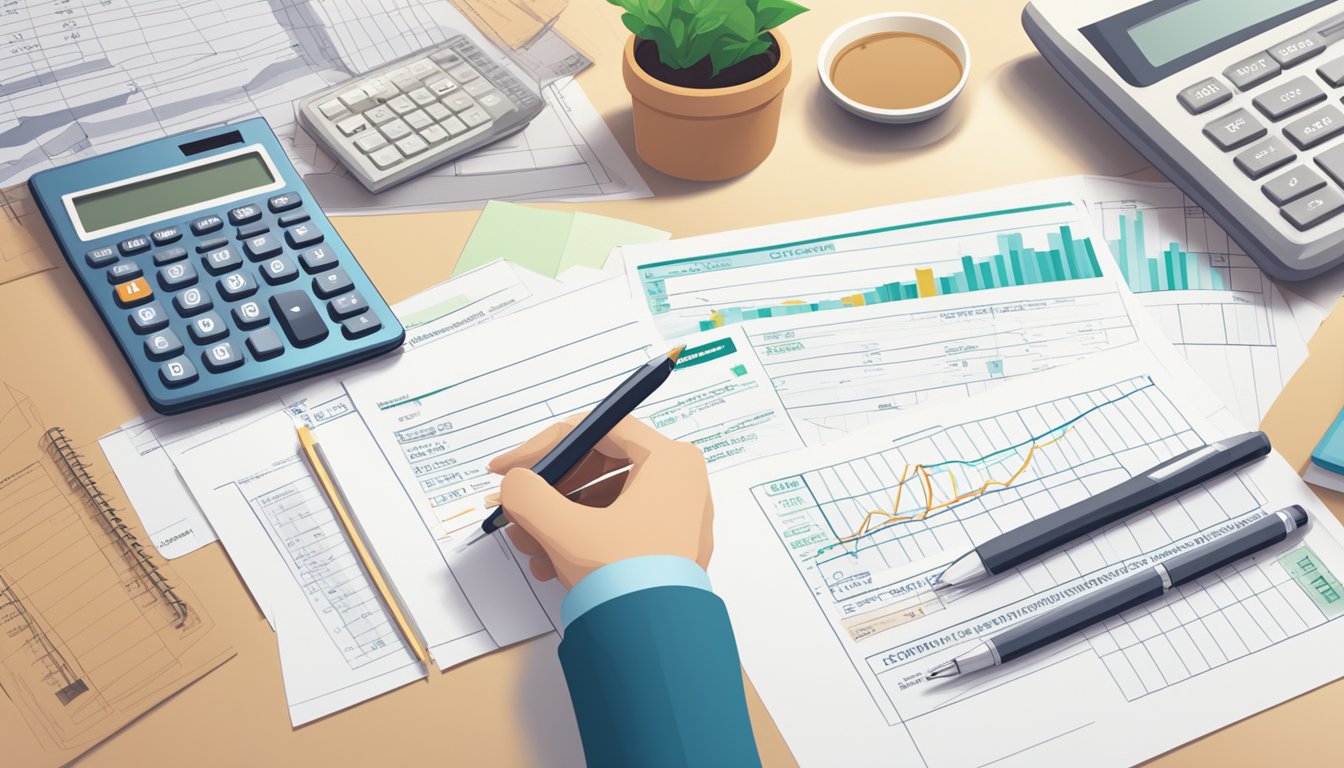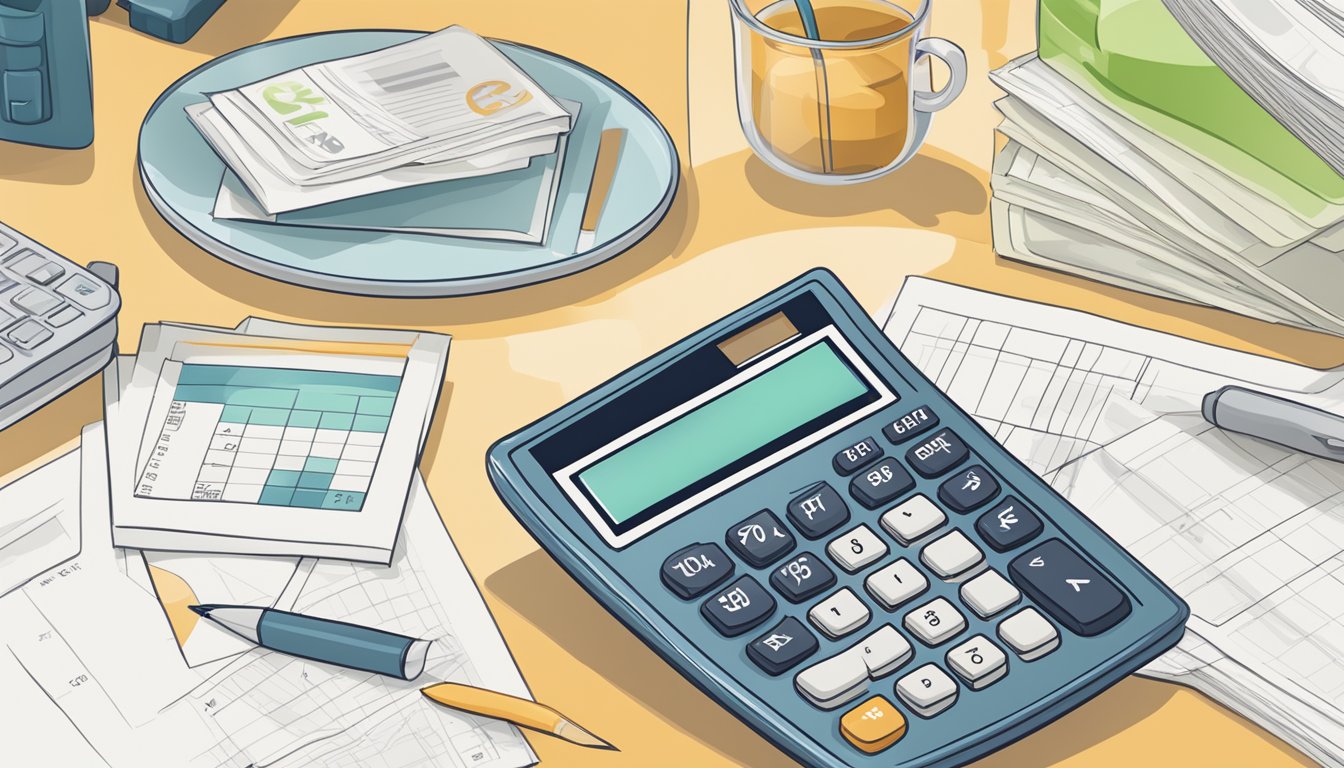Introduction:

If you are planning to buy a house in Singapore, you may be wondering how much of your Central Provident Fund (CPF) savings you can use to finance your housing loan. CPF is a compulsory social security savings scheme that helps Singaporeans save for their retirement, healthcare, and housing needs. In this article, we will explore the maximum monthly CPF amount that you can use for your housing loan in Singapore.
Understanding CPF for Housing Loans:
The amount of CPF savings that you can use for your housing loan depends on several factors, including the remaining lease of the property, the age of the youngest owner, and the monthly repayment amount approved by your financier. The CPF housing usage calculator can help you estimate the amount of CPF savings that you can use. The total monthly CPF deduction for all owners must not exceed the total monthly repayment amount approved by your financier.
Maximising Your CPF Usage for Housing:
To maximise your CPF usage for your housing loan, you can consider buying a property with a longer remaining lease, which can cover the youngest owner up to age 95. You can also make voluntary contributions to your CPF Special Account (SA) and Ordinary Account (OA) to increase your CPF savings. However, you should also be aware of the financial implications and plan for your long-term financial health.
Key Takeaways
- The amount of CPF savings that you can use for your housing loan depends on several factors, including the remaining lease of the property, the age of the youngest owner, and the monthly repayment amount approved by your financier.
- To maximise your CPF usage for your housing loan, you can consider buying a property with a longer remaining lease and make voluntary contributions to your CPF SA and OA.
- You should also be aware of the financial implications and plan for your long-term financial health when using your CPF savings for your housing loan.
Understanding CPF for Housing Loans

If you are planning to purchase a property in Singapore, you may be eligible to use your CPF savings to fund your housing loan. Here is what you need to know about CPF and housing loans.
CPF Savings and Housing Loan Eligibility
CPF, or Central Provident Fund, is a mandatory social security savings scheme for Singaporeans. Your CPF savings are split into three accounts: the Ordinary Account (OA), Special Account (SA), and Medisave Account (MA). When it comes to housing, you can use your CPF savings from your OA to pay for your property.
To be eligible to use your CPF savings for a housing loan, you must meet certain criteria. You must be a Singapore citizen or permanent resident, and you must have sufficient CPF savings in your OA to cover the downpayment and monthly instalments for the property.
Ordinary Account and Housing Usage
The amount of CPF savings you can use for your housing loan depends on your property’s purchase price and loan-to-value (LTV) ratio. The LTV ratio is the amount of the loan divided by the property’s value. The maximum LTV ratio for HDB flats is 90%, while private properties have a maximum LTV ratio of 75%.
You can use your CPF savings to pay for the downpayment, monthly instalments, and other housing-related expenses such as stamp duty and legal fees. However, the total monthly CPF deduction for all owners must not exceed the total monthly repayment amount approved by your financier.
Loan-To-Value Ratio and Purchase Price
The purchase price of the property and the LTV ratio determine the maximum amount of CPF savings you can use for your housing loan. For example, if you are purchasing an HDB flat with a purchase price of $500,000 and an LTV ratio of 90%, you can use up to $450,000 of your CPF savings from your OA.
It is important to note that using your CPF savings for your housing loan reduces the amount of savings you have for retirement. Therefore, it is essential to carefully consider your financial situation before using your CPF savings for a housing loan.
In conclusion, understanding CPF and housing loans is crucial when planning to purchase a property in Singapore. By knowing the eligibility criteria, the usage of your Ordinary Account, and the impact of the loan-to-value ratio and purchase price, you can make informed decisions about using your CPF savings for your housing loan.
Maximising Your CPF Usage for Housing

If you are planning to purchase a property in Singapore, you may be wondering how much CPF savings you can use for your housing loan. Maximising your CPF usage can help you save on interest and reduce your monthly instalments. In this section, we will explore how you can make the most of your CPF savings for your housing loan.
CPF Withdrawal Limits
The amount of CPF savings you can use for your property purchase is subject to withdrawal limits. The current withdrawal limit is 120% of the valuation limit or the purchase price, whichever is lower. The valuation limit is the property’s value at the time of purchase, as determined by a professional valuer.
For example, if the valuation limit of your property is $1 million, the maximum CPF savings you can use for your housing loan is $1.2 million. However, if the purchase price of your property is only $800,000, the maximum CPF savings you can use is $960,000.
Maximising OA Savings for Housing
Your Ordinary Account (OA) savings can be used to pay for your housing loan instalments. The amount of OA savings you can use depends on your age, property type, and loan type. You can use the CPF housing usage calculator to estimate the amount of OA savings you can use for your property purchase.
To maximise your OA savings for housing, you can consider the following strategies:
- Make voluntary contributions to your CPF account to increase your OA savings.
- Use your OA savings to make a lump sum payment towards your housing loan to reduce your interest payments.
- Choose a shorter loan tenure to reduce your interest payments and maximise your OA savings.
By maximising your CPF usage and OA savings for housing, you can save on interest and reduce your monthly instalments. Use the CPF housing usage calculator to estimate the amount of CPF savings you can use and explore different strategies to make the most of your CPF savings for your housing loan.
Financial Implications and Planning

When it comes to buying a home in Singapore, there are several financial implications that you need to consider. One of the most important aspects is the monthly instalment amount that you can use from your CPF savings. This amount is subject to certain limits and depends on various factors such as the remaining lease of the property, the interest rate, and the repayment period.
Interest Rates and Repayment Period
The interest rate on your housing loan can have a significant impact on your monthly instalment amount. Generally, the higher the interest rate, the higher your monthly instalment will be. It is important to choose a loan with a competitive interest rate to keep your monthly instalments manageable.
Another factor to consider is the repayment period. The longer the repayment period, the lower your monthly instalment will be. However, a longer repayment period also means that you will end up paying more interest over the life of the loan. It is important to strike a balance between a manageable monthly instalment and a reasonable repayment period.
Impact on Retirement Savings
Using your CPF savings to pay for your home loan can have an impact on your retirement savings. Your CPF savings are meant to be used for retirement, and using them to pay for your home loan means that you will have less money available for retirement.
It is important to keep in mind the Basic Retirement Sum (BRS) and Full Retirement Sum (FRS) when using your CPF savings for your home loan. The BRS is the minimum amount you need to have in your CPF account when you turn 55 to receive a basic monthly payout from your CPF LIFE annuity. The FRS is the amount you need to have in your CPF account when you turn 55 to receive a higher monthly payout.
In conclusion, when planning to buy a home in Singapore, it is important to consider the financial implications and plan accordingly. Keep in mind the total amount of CPF savings that can be used, the interest rate, the monthly instalment amount, the repayment period, and the impact on your retirement savings. By doing so, you can make an informed decision and ensure that you are financially prepared for the long term.
Options Beyond CPF: Bank Loans and Refinancing

If you are considering purchasing a property in Singapore, you might be wondering if CPF is the only option available to you. While CPF is a popular choice, there are other options you can consider. In this section, we will explore two other options: Bank Loans and Refinancing.
Comparing HDB Loan and Bank Loan
When purchasing a property in Singapore, you have the option of taking a loan from either HDB or a financial institution. HDB loans have a fixed interest rate, which means that your monthly instalment amount will remain the same throughout the loan tenure. On the other hand, bank loans have a variable interest rate, which means that your monthly instalment amount will fluctuate based on market conditions.
One advantage of taking a bank loan is that you have more flexibility in terms of loan tenure and repayment options. You can choose a longer loan tenure to reduce your monthly instalment amount, or a shorter loan tenure to pay off your loan faster and save on interest. Additionally, you can choose to make partial prepayments or full prepayments to reduce your outstanding loan amount.
Refinancing Your Housing Loan
Refinancing your housing loan means that you are taking a new loan to replace your existing loan. This can be a good option if you want to reduce your monthly instalment amount, or if you want to switch from a fixed interest rate to a variable interest rate, or vice versa.
When refinancing your housing loan, it is important to compare the interest rates and fees of different financial institutions. You should also consider the loan tenure and repayment options offered by each institution.
In conclusion, while CPF is a popular option for financing your housing loan in Singapore, there are other options you can consider. Bank loans and refinancing can offer you more flexibility and potentially lower your monthly instalment amount. It is important to do your research and compare the different options available to you before making a decision.
Maintaining Financial Health

As a homeowner in Singapore, it is important to maintain a healthy balance between your outstanding housing loan and your retirement accounts. This will ensure that you are able to meet your financial obligations while still planning for the future.
Balancing Loan and Retirement Accounts
One way to maintain a healthy balance is to ensure that you have enough cash on hand to cover your monthly housing loan instalments. You can also consider using your CPF Ordinary Account (OA) savings to pay for your housing needs. However, it is important to note that the total monthly CPF deduction for all owners must not exceed the total monthly repayment amount approved by your financier.
To ensure that your retirement accounts remain healthy, you should also consider contributing to your CPF Special Account (SA) and/or your Retirement Account (RA). These accounts provide a steady stream of income during your retirement years.
Planning for the Future
When planning for the future, it is important to take into account your current financial situation as well as your long-term goals. This includes setting aside enough money for emergencies, as well as planning for major expenses such as your children’s education or your own retirement.
To help you plan for the future, the CPF Board provides a range of calculators and resources. These include the CPF First Home Calculator, which helps you estimate the property price and the housing loan you can afford based on your current financial situation. The CPF Housing Usage Calculator also helps you gauge how much OA savings you can use to fund your housing purchase.
By maintaining a healthy balance between your outstanding housing loan and your retirement accounts, and planning for the future, you can ensure that you are able to meet your financial obligations while still achieving your long-term goals.
Frequently Asked Questions

What’s the upper limit of CPF funds I can utilise for my HDB flat’s monthly instalments?
The maximum monthly instalment amount that can be used for your property depends on the total monthly repayment amount approved by your financier. The total monthly CPF deduction for all owners must not exceed this amount. You can use the CPF housing usage calculator to estimate the amount of CPF savings that you can use.
Can I splash out my CPF savings on monthly payments for my condominium?
Yes, you can use your CPF savings for the monthly payments of your condominium. However, the amount of CPF savings allowed for your property depends on the extent that the remaining lease of the property can cover the youngest owner up to age 95. No further CPF usage is allowed thereafter.
What’s the peak amount I can borrow from my CPF for a housing loan?
The amount of CPF savings that you can use for your housing loan depends on various factors such as the remaining lease of the property, your age, and the outstanding loan amount. The maximum amount that you can borrow from your CPF Ordinary Account (OA) is the lower of the purchase price or the value of the property at the time of purchase.
Is there a way to boost my CPF contributions for settling my housing loan more swiftly?
Yes, you can make voluntary contributions to your CPF Special Account (SA) or Retirement Account (RA) to boost your CPF savings. These contributions can be used to pay for your housing loan and will earn attractive interest rates.
Up to what age can I dip into my CPF stash to finance a property purchase?
You can use your CPF savings to finance a property purchase up to the age of 55. After that, you can still use your CPF savings for your monthly mortgage payments, but you cannot withdraw any more funds from your CPF account for your property.
Are there calculators to help me figure out my CPF withdrawal limits for housing loans?
Yes, you can use the CPF housing usage calculator to estimate the amount of CPF savings that you can use for your housing loan. This calculator takes into account factors such as the remaining lease of the property, your age, and the outstanding loan amount.




